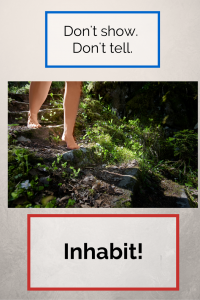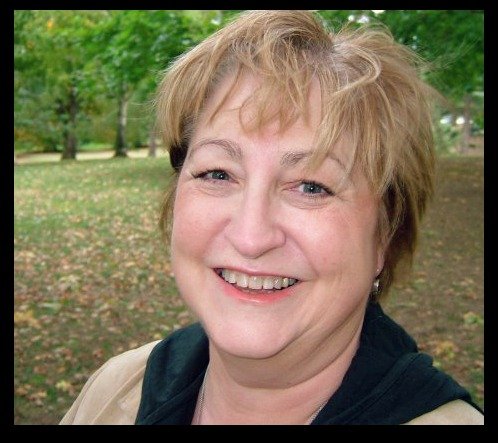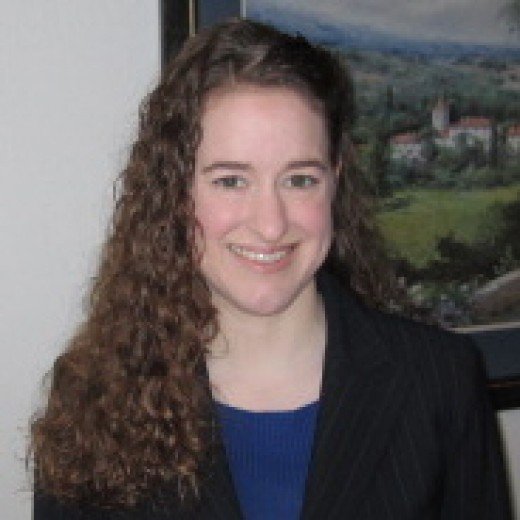Don’t show. Don’t tell. Inhabit! by Jackie Blain
Today we welcome a new columnist, Jackie Blain who is stopping by to chat with us today about “don’t show, don’t tell, inhabit!” from a screenwriter’s perspective. Enjoy!
***
Here’s a simple description based on a short passage from one of my favorite mystery writers, Elizabeth Peters, in Amelia Peabody’s inimitable Victorian-era voice :
“Emerson’s deep voice as he talked about ‘modern inconveniences’ almost put me to sleep in the bathtub, until he started shouting with rage.”
Now try the original:
“Emerson’s deep baritone fell pleasantly on my ears and his pungent comments on ‘modern inconveniences’ added spice to the news itself. Dreamily contemplating my toes, as they floated on the surface of the scented water, I fell into a kind of waking doze, from which I was rudely awakened by Emerson’s scream of rage.”
The first one’s “fine.”
But the second – the original – makes us feel as if we’re right there, in the bath with narrator, floating toes and all.
In fact, you can almost smell those spices wafting in the window of Shepheard’s hotel in Cairo, as pungent as her husband’s smart cracks about things like flush toilets.
We all know “show, don’t tell” and “use all the senses” when it comes to description. But how do we do that? How do we move from “fine” to “immersive”?
Here’s an exercise I use with my screenwriting students, who don’t have room for long descriptions. By the way, you might want to have someone read this to you so you can just go with it.)
First, think of your favorite spot when you were a kid.
It could be a hiding place, or your grandmother’s kitchen. An empty field. A boulder beside the stream in your neighbor’s yard.
Got it?
Next, close your eyes. Take a deep breath. Hold it. Let it out…
- ..and go there. Be there. Put yourself back in that place. And look around…
- What do you see? People? What are they doing? Saying? Are they talking to you? To someone else? What are they wearing? What color? What does the fabric feel like? Do they smell like cigarette smoke, or pumpkin pie spice? Or car exhaust? Or is there no one else there at all? Just you?
- What do you see? Birds? Fences? Old tires? What can you touch? What textures? The roughness of bark? The smooth coldness of metal? The crinkle of paper or leaves?
- Is it bright? Dark? Hard? Soft? Is there sun through leaves? The kitchen light through a crack in a door?
- Is the air heavy with humidity? Or smoke? Does it taste as clear as a summer afternoon when a rain shower has passed? Or like an old trunk in an attic?
- What do you hear? The sound of car engines? Children playing? Surf on a rocky shore?
- How do you feel? Light? Heavy? Happy? Safe?
Just be there. Look. Listen. Touch things. Feel how you feel.
And when you’re ready, slowly open your eyes, take a breath… and write for seven minutes about what you just experienced.
If you really embraced the exercise, and the space, you’ll probably feel pretty… something.
Tired, happy, sad, exhausted.
Whatever it is, that’s the power of description when you’ve gone beyond showing and telling, and have started inhabiting. I’ll betcha if you let someone else read what you just wrote, chances are they’re inhabiting that space, too.
There’s more to this exercise, and Beth has been nice enough to ask me to keep going. So do Part One, and I’ll give you Part Two in two weeks.
***
Editor’s note: Jackie, I look forward to your next installment!
***
Subscribe to this blog to get Jackie’s next post and the near-daily posts from Writer’s Fun Zone.
***
ABOUT THE AUTHOR
Jackie Blain is a writer, screenwriter, writing teacher and member of the Writers Guild of America who works with dedicated screenwriters and filmmakers to make their work the best it can be… and remember that they got into this writing thing because of passion and fun. She lives in Brooklyn NY with two cats who, she suspects, hate the heat and wish they were still in Oregon. More about Jackie Blain’s courses, consultations, and evaluation services for screenwriters and filmmakers here.









This is a great technique. Definitely a “keeper” article.
Thanks, Pamela! Glad you like it. You can certainly use it in a lot of situations like trying to get back into your 3-dimensional fictional world if you’ve taken a break of some sort. Nothing like harnessing the power of imagination and the 5 senses to fire up your creativity again!
[…] my colleague Beth Barany’s site, Writers Fun Zone, on how to create truly effective descriptions. Certified as a Creativity Coach and NLP […]